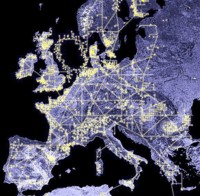Roadmap 2050: A practical guide to a prosperous, low-carbon Europe
 Landmark energy report paves way for zero carbon
Landmark energy report paves way for zero carbonpower
‘Roadmap 2050: a practical guide to a prosperous, low-carbon
Europe’ was published today by the European Climate Foundation
(ECF).
The project finds that in a decarbonised power system, the
future cost of electricity is comparable to the future cost of
electricity in the current carbon-intensive infrastructure. Roadmap
2050 also shows that with the necessary investments in energy
efficiency and Europe’s power network infrastructure, a
decarbonised power sector using available technologies can provide
the same high level of reliability that consumers enjoy today - in
all, low/zero carbon pathways.
The report was authored by the ECF with technical and economic
analysis by Imperial College London, KEMA, Oxford Economics and
McKinsey & Company and policy analysis by E3G and the Energy
Research Centre of the Netherlands (ECN). AMO, a research and
design studio within the Office for Metropolitan Architecture,
contributed to the content development through the production of a
graphic narrative which conceptualises and visualises the
geographic, political, and cultural implications of the integrated,
decarbonised European power sector.
More aggressive energy efficiency, build-out of the
power grid, regionally integrated market operations, energy market
reform, smart grids and a firm
commitment to phase out high-carbon assets on a fixed timetable,
are all urgently needed to enable Europe to achieve its economic,
security and climate goals
Roadmap 2050 looks at the economic, service reliability,
infrastructure, energy security and policy implications of the
European power system in 2050 in four decarbonised scenarios. The
pathways do not rely on imported electricity and are based on
existing or late stage development technologies including
renewables such as solar, wind, biomass, geothermal and also
non-renewable low-carbon resources such as carbon capture and
storage (CCS) and nuclear:
1. 40 per cent renewables, with the
remaining 60 per cent supplied evenly between non-renewable
low-carbon technologies: CCS and nuclear
2. 60 per cent renewables, with the
remaining 40 per cent supplied evenly between non-renewable
low-carbon technologies: CCS and nuclear
3. 80 per cent renewables, with the
remaining 20 per cent supplied evenly between non-renewable
low-carbon technologies: CCS and nuclear
4. The study has also assessed the
technical and economic feasibility of a scenario with 100 per cent
renewable electricity, requiring no nuclear power and limiting CCS
application to heavy industry, including solar power from North
Africa and breakthroughs on enhanced geothermal power
generation.
When the Roadmap 2050 project started, a number of widely shared
assumptions dominated the debate on the future of the European
power sector. These included assertions that high-renewable energy
scenarios would be too unstable to provide sufficient reliability,
that high-renewable scenarios would be uneconomic and much more
costly, and that technology breakthroughs would be required to move
Europe to a zero-carbon power sector. Roadmap 2050 has found all of
these assertions to be incorrect.
With the exception of existing hydroelectric facilities, almost
all of the power generation capacity required to supply Europe in
2050 will need to be built in the next 40 years. This is a major
undertaking regardless of the energy mix, and would pose a massive
challenge even in a high-carbon scenario.
Delay in acting on urgent priorities, and
failure to better coordinate action across borders from the outset,
will foreclose options, increase risks and dramatically
raise the costs of achieving Europe’s energy and climate
objectives
The key finding of the Roadmap 2050 project is that the
challenge is basically the same in either a high-carbon, low-carbon
or zero-carbon energy scenario, in terms of overall cost and
scale.
What does change significantly is the required level of
investment early in the cycle. Capital expenditure on energy
infrastructure will need to double in the next 15 years to deliver
a zero-carbon power sector by 2050. But in that scenario, the
overall energy bill for the economy will be heading downward by
2020, and the day-to-day running costs fall fast throughout the
period.
As well as studying the technical requirements of the grid and
power infrastructure and the economics of the various scenarios,
the Roadmap 2050 project has also delivered an analysis of the
policy requirements for decarbonisation of the power sector by
2050.
Action before 2015 is a prerequisite for decarbonisation by
2050. Immediate policy development and implementation should focus
on:
• energy efficiency measures,
creating cost savings and reducing demand
• investments in regional networks and local smart grids and
coordination of power market operations among member states,
maximising the value of low-carbon investments and minimising
back-up supply and load-balancing requirements
• market reform to ensure an effective investment scenario.
Roadmap 2050 shows that existing policy frameworks can be
adapted to support decarbonisation of the European power sector,
but that an holistic approach is needed, with rapid action at both
regional and national level required.
The Roadmap 2050 project shows that the benefits of the
low-carbon transition by far outweigh the challenges and that a
commitment now to a systemic low-carbon transformation of the
energy sector is ultimately the winning economic strategy for
competitiveness, jobs and low-carbon prosperity in Europe.
Achieving at least 80 per cent greenhouse gas reductions in 2050
based on zero-carbon power generation in Europe is technically
feasible and makes compelling economic sense.
The Executive Summary is available
target=”_blank”>here
Source: www.roadmap2050.eu

